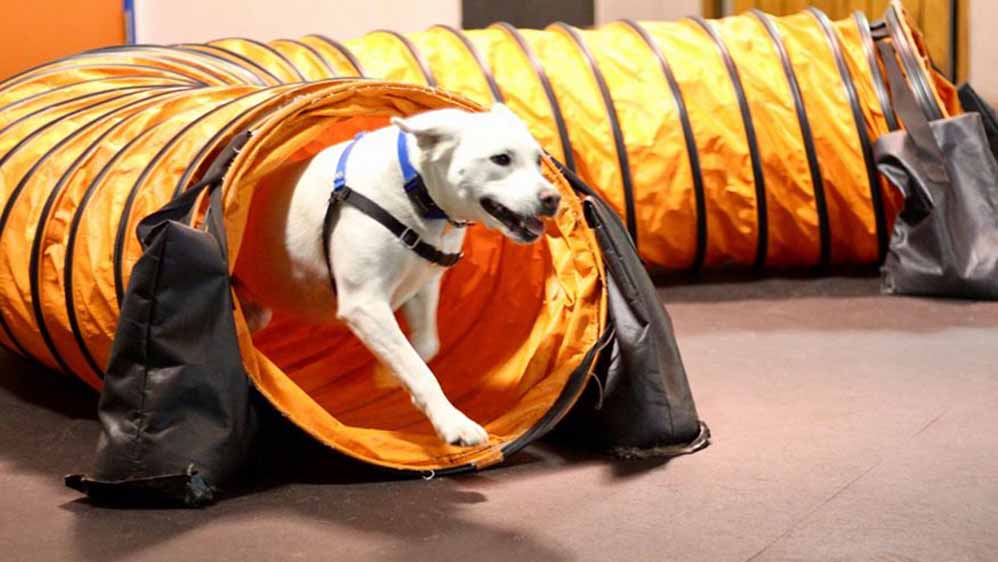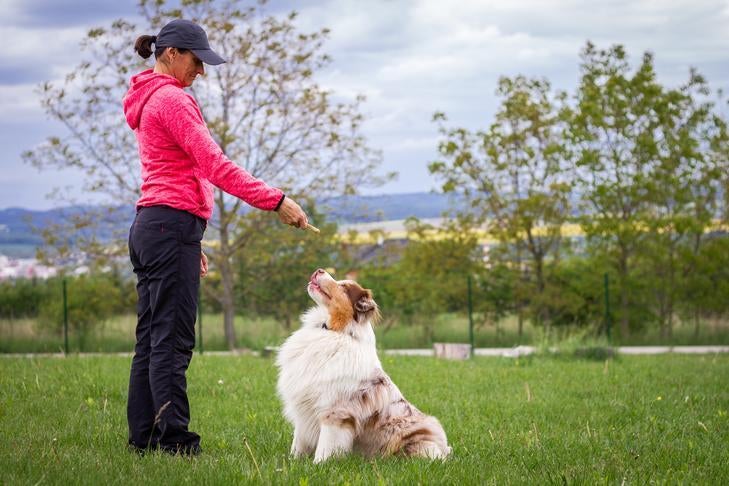Comprehending Canine Body Language During Dog Training
Comprehending Canine Body Language During Dog Training
Blog Article
Necessary Tips for Successful Dog Training: A Guide for Pet Owners
Efficient dog training is a complex process that requires a critical method customized to both the family pet's temperament and the proprietor's objectives. Recognizing exactly how to browse these challenges can significantly improve the training experience, ultimately changing the relationship in between proprietor and canine.
Recognizing Dog Actions
Recognizing dog behavior is important for efficient training and cultivating a harmonious relationship between pooches and their owners. dog training. Canines communicate mostly through body language, vocalizations, and actions, making it important for proprietors to analyze these signals precisely.

Socializing plays a considerable role in dog actions; exposure to numerous atmospheres, individuals, and various other pets can significantly influence a canine's character. Factors such as breed features and private personality ought to lead training approaches, as some types might have specific behavioral traits that demand customized approaches. By understanding these components, proprietors can produce an encouraging environment that encourages favorable habits, leading to effective training outcomes and a much deeper bond with their pet dogs.
Establishing Consistent Commands
Effective communication with your pet begins with developing consistent commands. This foundational aspect of training is crucial for cultivating understanding in between you and your family pet. Uniformity in the commands you make use of guarantees that your canine can dependably associate specific words or expressions with the preferred actions.
When choosing commands, pick clear, unique words that are easy to state and set apart from one another. Prevent using similar-sounding commands that might confuse your canine. For instance, utilizing "sit" and "remain" is suitable, however "sit" and "struck" could result in misunderstandings.
Additionally, keep the same tone and quantity for each and every command. Pets are delicate to vocal cues, so differing your tone can develop complication.
It is equally essential to make sure that all member of the family get on the exact same web page concerning the commands used. A united front in command use will avoid blended signals and reinforce the learning procedure.
Positive Support Methods
The power of favorable support in pet training exists in its capacity to urge preferred actions via incentives and appreciation. This method is grounded in the concept that actions adhered to by favorable results are most likely to be duplicated. By incorporating positive reinforcement into your training regimen, you can efficiently shape your dog's behavior in a constructive way.
To carry out positive support, it's vital to determine what motivates your pet dog, whether it be deals with, playthings, or verbal praise. When your pet dog executes a desired action, such as sitting on command, immediately award them with a treat or love. This organization in between the command and the favorable result reinforces their understanding.
It's vital to timing the benefits properly; providing the reinforcement within seconds of the preferred actions helps your pet make the connection (dog training). In addition, consistency is vital-- make certain that all household participants utilize the very same commands and benefit systems to avoid complication

Progressively, you can minimize the frequency of treats as your dog discovers the behavior, transitioning to applaud or intermittent benefits. This approach not just fosters a solid bond in between you and your canine but also advertises a positive knowing environment, making educating a delightful experience for both.
Socialization and Interaction
Regularly exposing your canine to a range of atmospheres, people, and various other animals is critical for their social development. Socializing ought to start early, navigate here preferably during the essential window of 3 to 14 weeks, when young puppies are most responsive to new experiences. However, older canines can likewise gain from continuous socialization initiatives.
Present your pet dog to different settings, such as parks, pet-friendly stores, and city areas. This direct exposure aids them adjust to different stimuli, reducing anxiousness and anxiety feedbacks. Motivate positive communications with various other canines and people, ensuring that these experiences are regulated and risk-free to foster self-confidence.
Make use of structured playdates with well-mannered pet dogs, as this can enhance your pet's social skills and educate them suitable actions. Obedience classes and training sessions additionally offer superb chances for socializing, enabling your pet to communicate with others in a monitored environment.
Screen your dog's body language throughout interactions, as this will aid you evaluate their comfort degree. Progressively boost exposure to even more challenging scenarios while making certain that each experience declares. additional info A well-socialized dog is more probable to show balanced actions, making them a pleasure to have in any type of setting.
Attending To Typical Training Difficulties
Every pet owner will run into training difficulties at some time, no matter their pet's age or socializing level. Recognizing typical problems such as stubbornness, disturbances, and terror can help in developing effective methods for renovation.

Distractions throughout training sessions can hinder emphasis. To fight this, begin training in a silent environment with very little stimulations. Progressively introduce distractions as the pet comes to be extra efficient in commands. Short, regular training sessions are additionally efficient in maintaining focus.
Fearfulness can hinder a pet dog's discovering process. Gradual desensitization to the resource of fear, combined with favorable reinforcement, can assist reduce stress and anxiety. Persistence is important; never compel a pet dog right into a situation that triggers distress, as this may intensify the problem.
Inevitably, understanding and addressing these usual obstacles with a structured method will cultivate an extra efficient training experience, reinforcing the bond in between dog and proprietor while advertising efficient understanding.
Conclusion
In recap, successful pet training relies on a comprehensive understanding of canine behavior, the facility of consistent commands, and the application of favorable reinforcement techniques. Socializing plays a vital function in developing well-adjusted animals, while attending to typical training challenges calls for patience and flexibility. By implementing these essential strategies, pet proprietors can foster a strong bond with their pet dogs and promote preferable habits, ultimately leading to a harmonious partnership in between humans and their canine buddies.
Understanding pet behavior is essential for effective training and cultivating a harmonious connection between dogs and their proprietors.Socialization plays a substantial role in pet behavior; direct exposure to various environments, people, and other animals can substantially influence a dog's personality.The power of favorable support in dog training exists in its capacity to motivate wanted habits via benefits and praise. By integrating positive reinforcement right into your training routine, you can efficiently shape your canine's habits in a constructive way.
In recap, successful canine training counts on a thorough understanding of canine actions, the facility of consistent commands, and the application of positive support methods.
Report this page